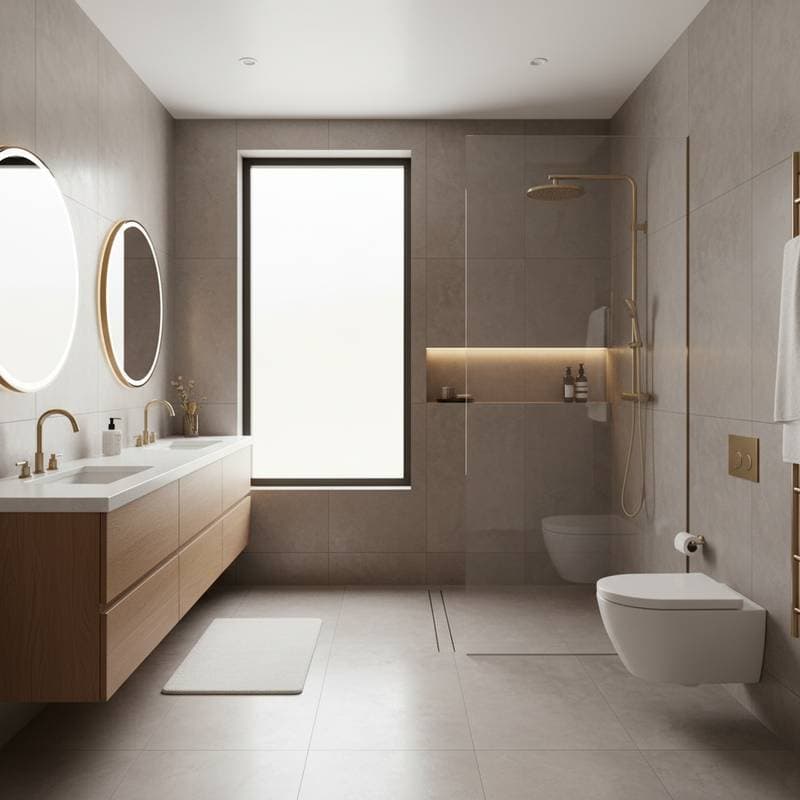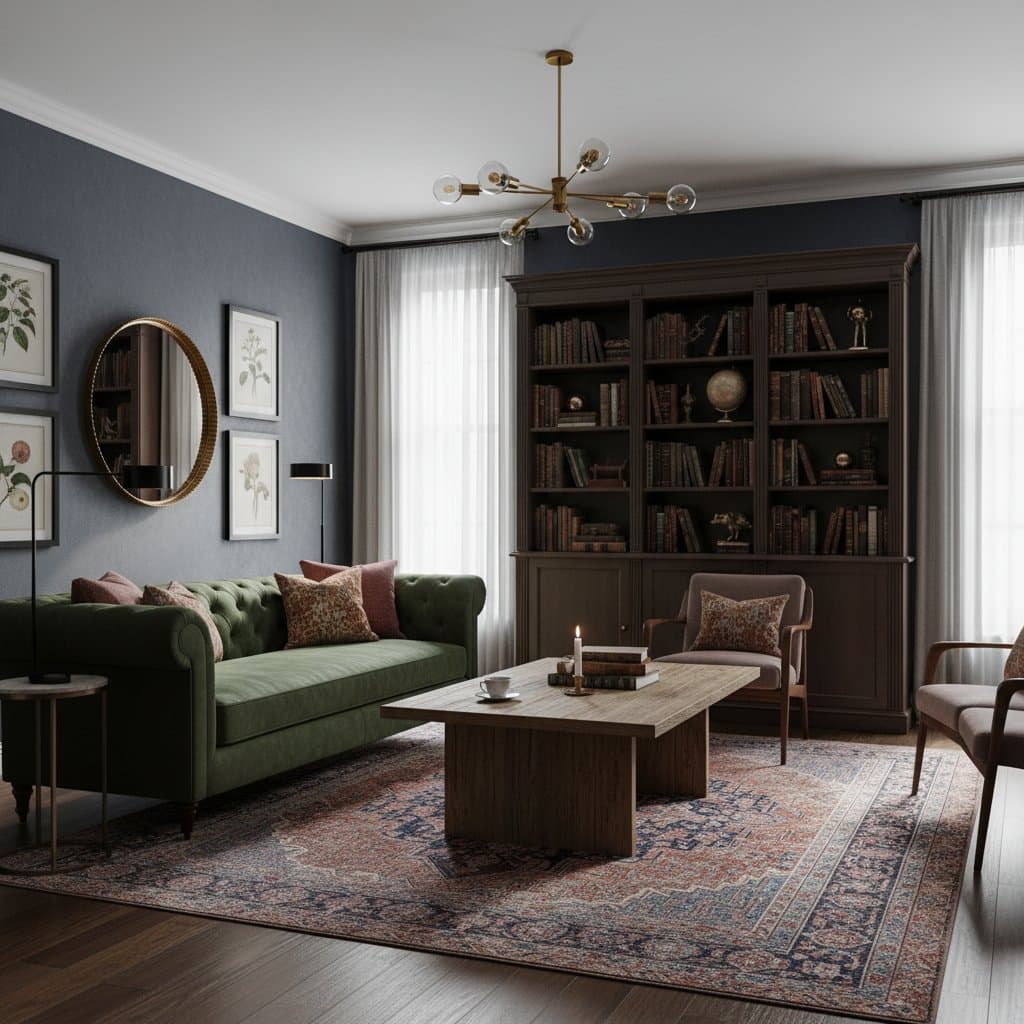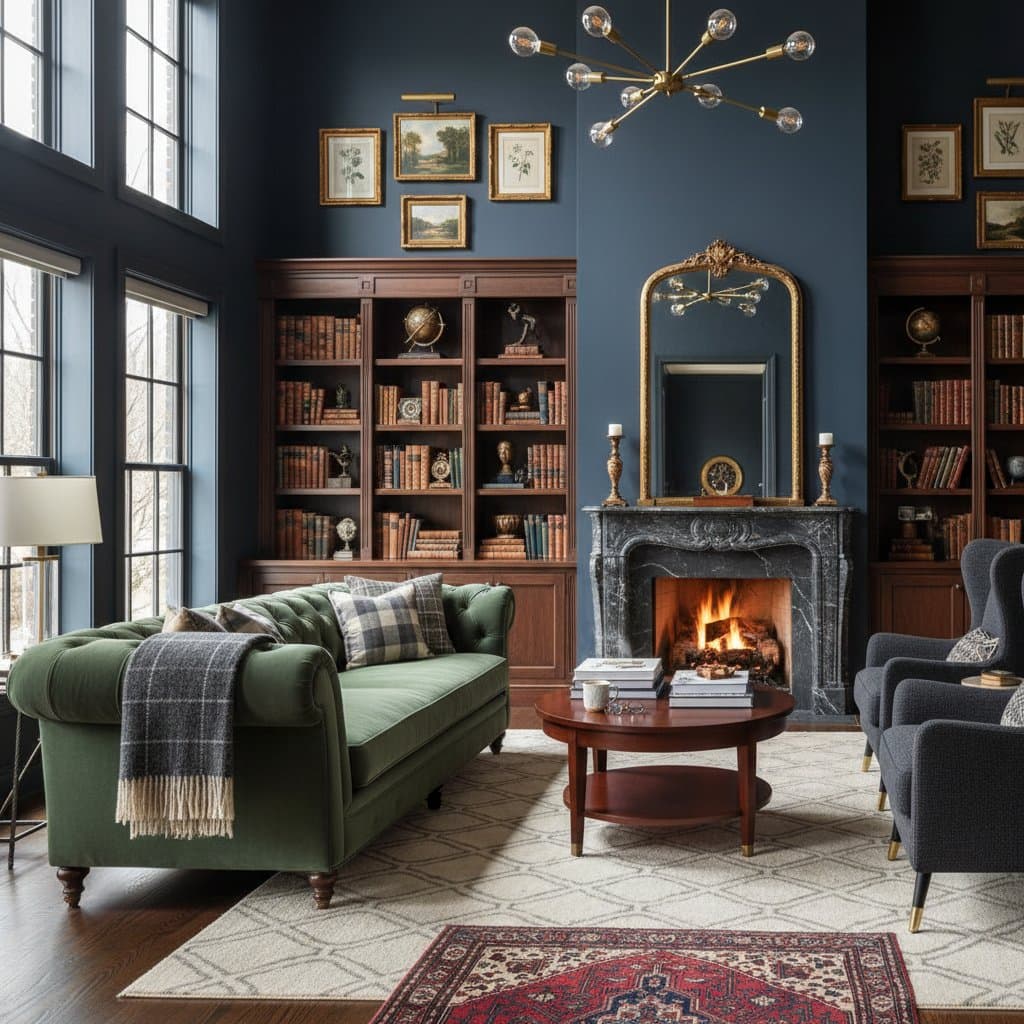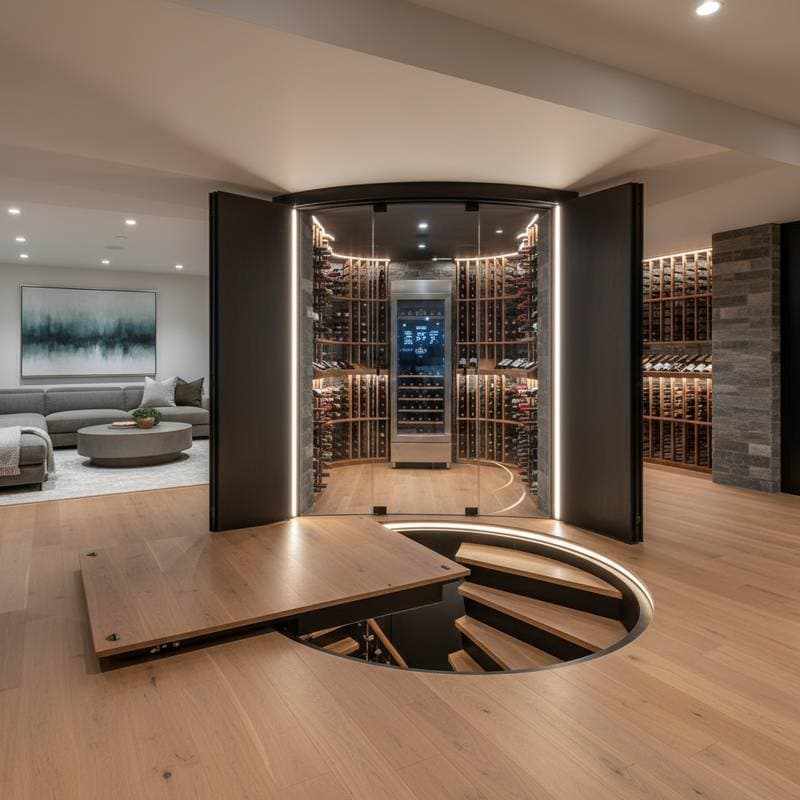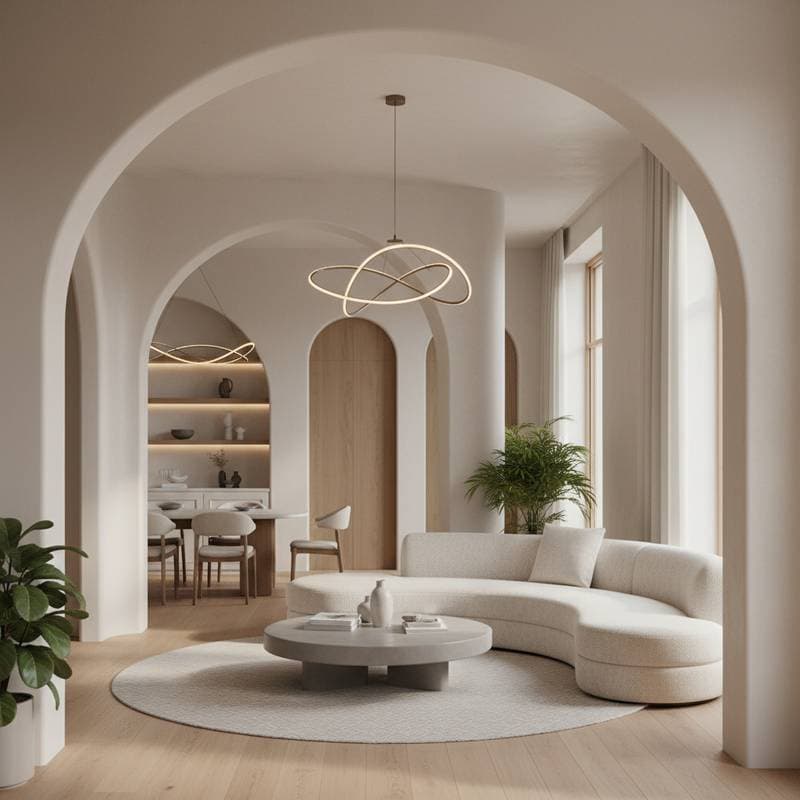Dark Moody Interiors: The 2025 Trend That Increases Home Value by 11%
Dark moody interiors transition from specialized designs to widespread popularity. Homeowners discover that employing deep color schemes elevates property appeal and draws buyers seeking premium aesthetics without extensive overhauls. This style suits individuals refreshing homes for sale or crafting serene, contemporary spaces that appear custom-built.
Cost Breakdown for Implementation
Expenses for developing a dark moody interior vary based on project scope and material quality.
National average range: $4,000 to $18,000 for refreshing a medium-sized home
Standard project range: $7,500 to $12,000 covering repainting, lighting enhancements, and basic furnishings
High-end projects: $20,000 or higher for comprehensive updates including custom cabinetry and premium materials
Factors influencing expenses
- Quality of paint and required coats
- Upgrades to lighting fixtures and installation
- Replacement of furniture and textiles
- Application of wall treatments such as paneling or plaster
- Fees for professional design consultation or staging
Homeowners who focus on wall painting and light fixture changes often invest only a few thousand dollars. More extensive projects incorporating new flooring, trim, and built-in features incur higher costs yet typically enhance resale value significantly. Real estate experts project an average 11% rise in home value for well-executed dark moody interiors.
Variations in Dark Moody Styles
Dark moody interiors differ in color tones, surface finishes, and material textures. Selecting the appropriate mix hinges on the home's natural light levels and architectural features.
Deep Neutral Combinations
Charcoal grays, warm taupes, and rich espresso shades form the base. These create a subtle modern vibe that complements wood accents and stone surfaces. Such palettes excel in living rooms and bedrooms where relaxation prevails.
Vibrant Jewel Tones
Shades like emerald green, deep sapphire blue, and plush burgundy provide layered color intensity while maintaining elegance. These suit dining areas or focal walls that demand attention without overwhelming the space.
Monochromatic Black Schemes
Matte black walls paired with black trim or cabinetry deliver an edgy, industrial edge. This approach thrives in rooms bathed in ample natural light to prevent a cave-like effect.
Warm Earthy Blends
Olive greens, terracotta clays, and subtle rust hues offer a cozy alternative to stark grays or blacks. These integrate seamlessly into rustic or transitional home styles.
Textured Dark Applications
Techniques such as Venetian plaster, limewash finishes, or dark-stained wood paneling introduce depth and sensory appeal. They elevate luxury renovations, particularly on accent walls or in prominent areas.
Guide to Creating Dark Moody Interiors
Follow these steps to implement dark moody elements effectively.
- Select your color scheme. Identify two to three primary colors and apply sample swatches to walls for evaluation.
- Prepare the surfaces. Clean thoroughly, sand rough areas, and repair imperfections, as dark paints reveal every flaw.
- Apply a suitable primer. Opt for a tinted primer that aligns with the intended final color to ensure even coverage.
- Lay down the initial coat. Employ steady, uniform brush or roller strokes with professional-grade tools.
- Evaluate under various lights. Assess the color in both daylight and artificial illumination prior to the second coat.
- Incorporate trim details. Decide on contrasting trim for definition or matching tones for a cohesive flow.
- Set up multi-level lighting. Integrate overhead fixtures, task lighting, and ambient sources for balanced illumination.
- Introduce balancing textures. Incorporate wood grains, velvet fabrics, or stone pieces to add warmth and variety.
- Finalize the installation. Peel away masking tape, perform touch-ups, and reattach hardware for a polished result.
Lighter Approaches to Moody Design
For those hesitant about full dark transformations, consider these scaled-back options.
Single Accent Walls
Apply a deep hue to one wall while maintaining neutral tones elsewhere. This method reduces costs and allows simple reversal if needed.
Moody Furniture and Accessories
Incorporate dark sofas, area rugs, or drapery to establish contrast. Such choices deliver impact without altering permanent surfaces.
Divided Wall Treatments
Pair dark wainscoting on lower sections with lighter paint above. This maintains brightness while anchoring the room visually.
Subtle Dark Accents
Apply deep shades to trim, ceilings, or cabinetry to subtly ground the space. These elements enhance mood without dominating.
Each variation adjusts the overall ambiance and potential resale benefits while introducing moody elements gradually.
Maximizing Return on Investment and Resale Appeal
Market analyses indicate that dark moody interiors can elevate home value by approximately 11% through balanced execution and superior craftsmanship. This uplift stems from the perception of luxury and unified design. Prospective buyers view these spaces as immediately habitable and expertly curated.
Well-illuminated dark rooms capture superior photographs for online listings. Properties featuring this style often close sales more quickly, distinguishing themselves from commonplace light interiors. Consistency in finishes and thoughtful lighting placement prove essential.
Overapplication in compact or dimly lit homes may deter some buyers, however. In such scenarios, targeted uses like accent walls or darkened cabinetry produce optimal outcomes.
Expert Strategies for Optimal Results
Test paint samples across multiple wall sections to observe light-induced variations. Select warm-toned bulbs rated at 2700 to 3000 Kelvin to counteract any cool undertones. Coordinate door and trim colors for a streamlined contemporary appearance.
Incorporate mirrors and metallic accents to amplify light distribution. Reserve glossy finishes for emphasizing architectural highlights rather than broad applications.
These targeted decisions transform ordinary rooms into valuable assets with minimal additional expenditure.
Experiencing Daily Life in Dark Moody Spaces
Completed dark interiors alter the home's sensory profile profoundly. Spaces feel more tranquil and rooted, allowing furniture and art to emerge prominently. Residents often linger longer in these areas due to their restorative and intimate qualities.
Maintain vibrancy by swapping textiles with the seasons, such as airy linens for summer and plush throws for winter. Introduce potted plants or brushed metals to soften monochromatic expanses. These adjustments sustain the design's appeal and avert visual monotony.
Practical Actions to Get Started
Begin with one room to gauge light dynamics and emotional response throughout the day. If the atmosphere feels harmonious and inviting, proceed to adjacent areas. Gather physical samples of paints, floors, and fabrics to refine your selections.
For resale intentions, seek input from a local realtor or valuation specialist. They assess market preferences to validate the 11% value premium. In urban settings, dark designs particularly allure buyers desiring opulent differentiation.
Embrace the serene, elevated ambiance that dark moody interiors provide. This approach delivers enduring practicality, resilience, and enhanced worth through measured investments.
Frequently Asked Questions
Which colors characterize dark moody interiors?
Shades including deep charcoal, navy blue, matte black, espresso brown, olive green, and jewel tones such as emerald or burgundy emphasize depth and subdued sheen.
Do these designs make rooms appear smaller?
They do not, provided lighting and contrasting elements receive careful attention. Strategic illumination paired with pale accents preserves spaciousness amid the richness.
How much time does implementation require?
A single room demands 2 to 5 days for painting and lighting adjustments. Broader undertakings span 1 to 3 weeks, contingent on complexity.
Does the investment justify resale benefits?
It does, as quality execution correlates with an 11% value increment. Buyers associate dark interiors with refined, contemporary excellence.
What lighting configurations perform best?
Employ layered systems, blending overhead fixtures, sconces, and freestanding lamps for comprehensive coverage.
Dark moody interiors demonstrate color's power to enhance livability and market position. Through meticulous planning, premium materials, and equilibrated lighting, homeowners secure a timeless, upscale aesthetic that excels in competitive landscapes.


